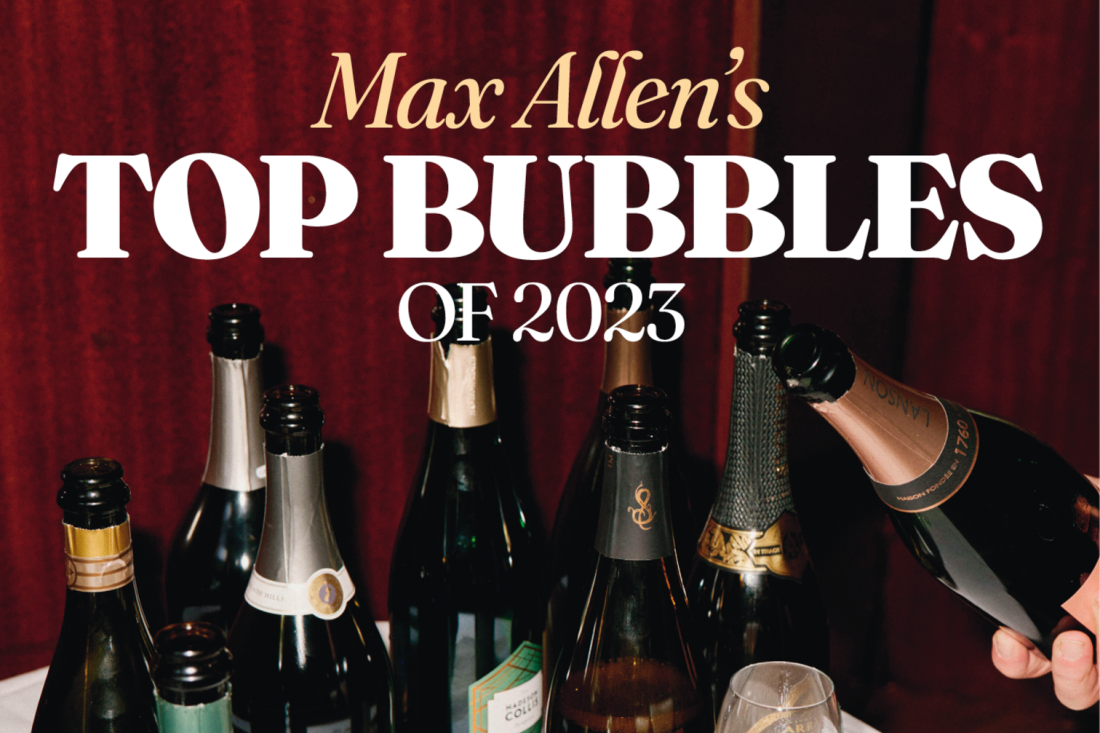- Opinion
- Life & Luxury
- Food & Wine
Champagne or sparkling: Max Allen’s taste test results revealed
Our expert takes a bunch of champagnes and a bunch of top Australian sparkling wines, pops the corks and puts them to a blind taste test.
It’s a conversation I’ve had countless times with champagne drinkers. “Oh yes, Australian sparkling wines are very good,” they’ll say. “I love what’s coming out of Tasmania, I do. But . . .” and here they’ll pause for effect, “. . . they’re not as good as champagne, are they? They’re just not.”
The last time this happened, I thought to myself, right, we need to put this to the test. So, I gathered a bunch of champagnes in various categories – non-vintage, rosé, late disgorged, etc – and a bunch of top Australian sparkling wines at roughly equivalent price points, wrapped them up to conceal their labels, popped the corks, and invited friends, family and colleagues to taste them and choose their preferred bottles.

Top sparkling wines of 2023.
I’d selected the wines based on several criteria. I asked Dan Murphy’s and Langtons for a list of their top-selling champagnes in each category to get a sense of what’s preferred out there in retail land.
I looked for wines that have received critical acclaim or done well in tasting competitions such as the long-running Australian Sparkling Wine Show and I looked back through my own tasting notes and articles about fizz – both French and local – to see what stood out.
Although I tried to match style and dollar value wherever I could to level the playing field, there are a couple of exceptions at either end of the price spectrum.
The first exception is the all-important non-vintage category: where most of the big-name non-vintage champagnes sit around $70 to $80 a bottle. Most of the best-known and most widely available Australian non-vintage wines cost around half that.
Also, while it’s easy to spend $500 or more on the very top champagnes, it’s hard to spend more than about $250 on the very best Australian sparkling. In both these categories, then, the price differential between the wines tasted is much wider than in the other categories – even though the quality difference is not so wide.
The people who joined me for the tasting represented a wide range of backgrounds – experienced wine tasters and hospitality professionals to passionate champagne consumers. The five top wines from the tasting reviewed here were the consensus pick of the group.
This tasting won’t end the debate, of course. It’s a pretty narrow set of data we’re working with here. You could choose five different champagnes and five different Australian sparkling wines and put them in a blind tasting tomorrow – or even the same wines with a different bunch of tasters – and the results would probably be different.
But it has given me something to work with the next time a champagne lover tells me that, “yes, Australian sparkling wines are good, and there are some lovely ones coming out of Tasmania, but are they really as good as champagne?”
“Well,” I’ll say, pausing for effect, “let me tell you about the time I put that to the test . . .”
The Summer issue of AFR Magazine – plus Watch special – is out on Friday, December 8 inside The Australian Financial Review.
Introducing your Newsfeed
Follow the topics, people and companies that matter to you.
Find out moreRead More

Latest In Food & wine
Fetching latest articles